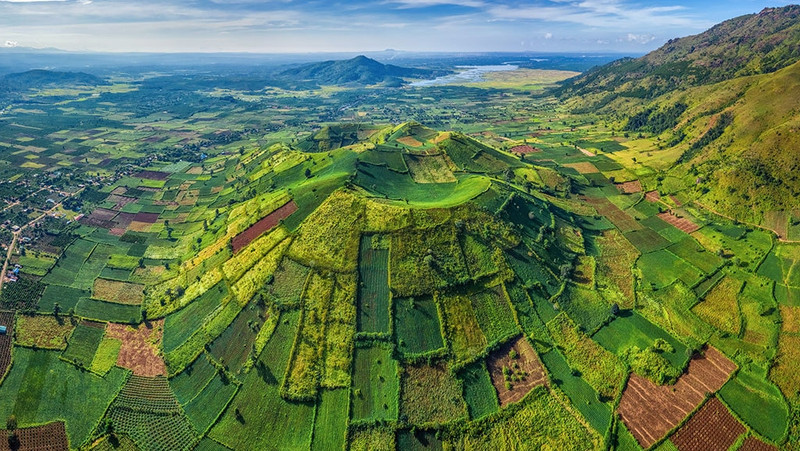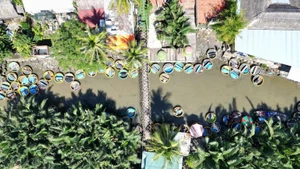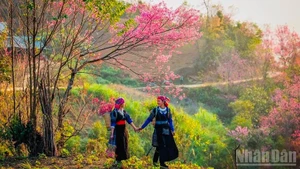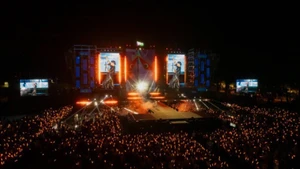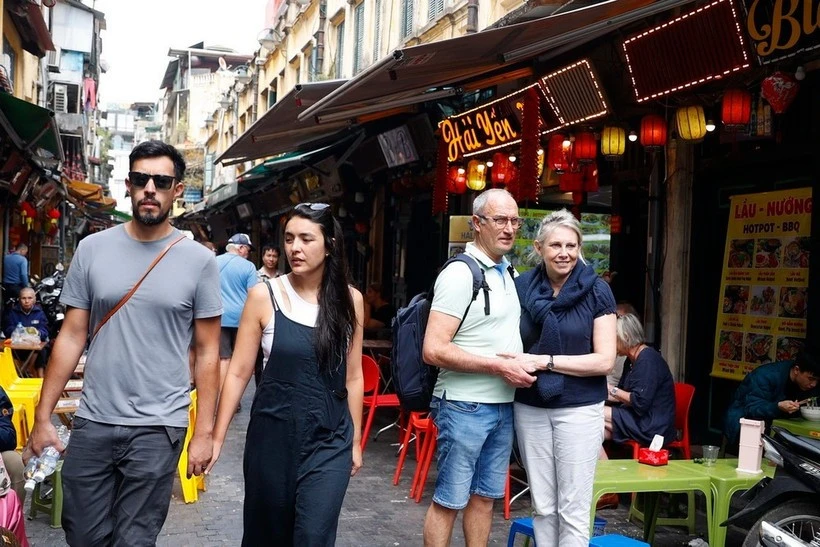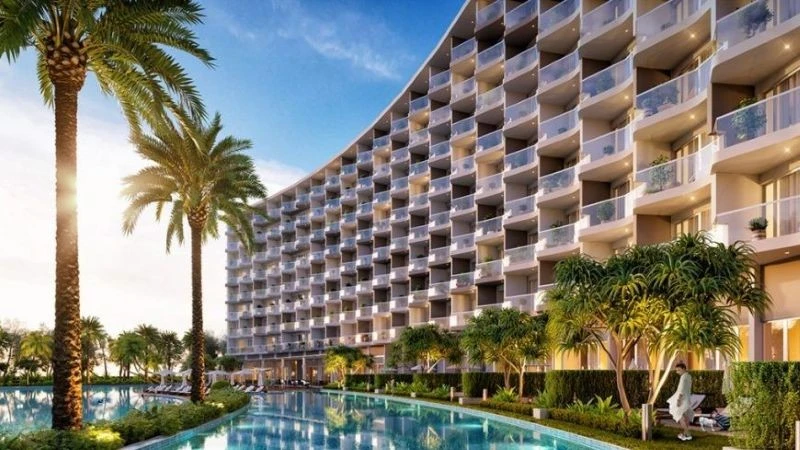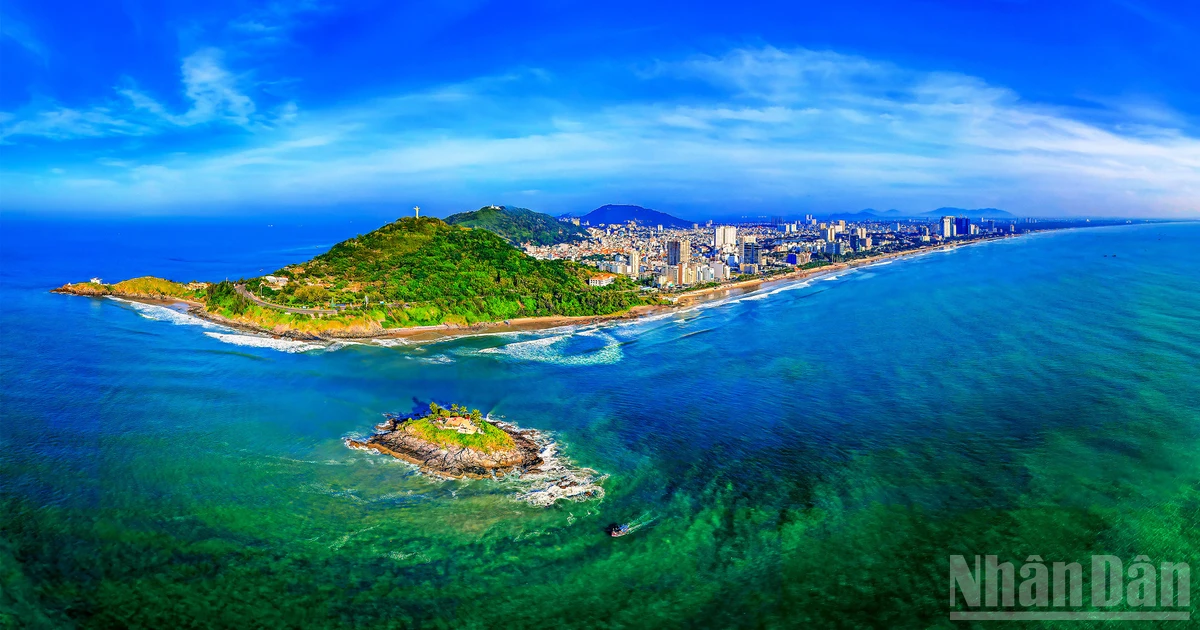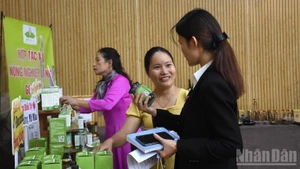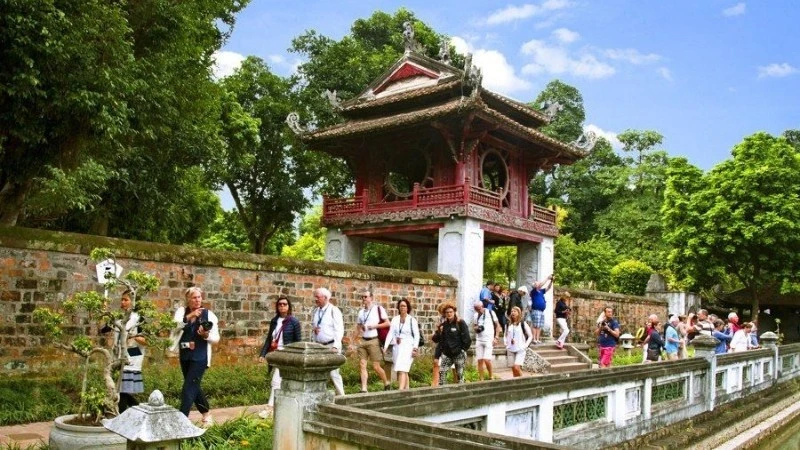During the global geological upheaval, tens of millions of years ago, Gia Lai used to be located in an area of more than 30 active volcanoes. Today, there are still vestiges of the volcanoes, which are now covered with the green prairies.
These volcanoes also became attractive places to visit within the province, with the most popular of which being Chu Dang Ya. In 2018, British newspaper Daily Mail listed Chu Dang Ya volcano as one of world's most jaw-dropping volcanic landscapes.
Chu Dang Ya is about 30km from the centre of Pleiku city to the northeast, at a height of 500m above sea level. The road from the downtown area of the city to the volcano is dubbed as “a touristy path” as it runs through many popular scenic sites in Gia Lai, including T’Nung lake, tea hill in Bien Ho (Sea Lake), Buu Minh pagoda, as well as coffee farms.
In the J'rai ethnic language, Chu Dang Ya means “wild ginger root”. From afar, visitors can see Chu Dang Ya mountain, with the shape of a giant upside-down bowl. The volcano crater is a low-lying basin with a flat and round base, surrounded by a 45-degree inclined mountain wall. Around the basin, locals grow rice and vegetables.
During the rainy season, Chu Dang Ya is adorned with a green coat, as it is time for locals to cultivate rice, corn, potatoes, vegetables, and pumpkin. In the dry season, the entire area is brightened with the brilliant yellow of wild sunflowers and the bright pink grass, creating a vivid and lively picture.
Those cheerful colours are created from the fertility of the land and the minerals hidden beneath the lava layer. Thanks to the rich source of nutrients, the trees, fruits and crops on Chu Dang Ya mountain always produce high productivity, compared with those grown in other regions.
Visitors to Chu Dang Ya, from late October to December, can admire the blooming season of wild sunflowers, which have created a typical image for the Central Highlands region and Gia Lai province in particular. Since 2018, Chu Dang Ya has been selected to host the annual Sunflower Festival, which has greeted hundreds of travellers each year.

Yellow wild sunflowers grow along the paths leading to Chu Dang Ya volcano. (Photo: NDO/Ha Du)
Le Thu Nga, a tourist from Binh Thuan province, said that because she loves wild sunflowers, she visits Chu Dang Ya every year to immerse in the romantic and peaceful scenery when the flowers bloom.
“I love the fresh air in this sunny and windy land, as well as the sincerity, honesty and the unique culture of the J'rai people here,” she said, adding that every time I come to Chu Dang Ya, she feels like she is at her beloved home.
Located at the foot of Chu Dang Ya mountain, Ia Gri village has boosted tourism development. With the support of local authorities, villagers have received training to do tourism activities, such as organising tours to Chu Dang Ya volcano, briefing visitors about the history of their J’rai ethnic group, and treating tourists with traditional delicious dishes.
Coming to Ia Gri village, visitors can enjoy joyful gong performances and learn more about the traditional brocade weaving and knitting. Adventure lovers can experience the thrill rides of paragliding over Chu Dang Ya volcano.
In an effort to further promote the potential of community-based tourism in Ia Gri village and Chu Dang Ya volcano in particular, Gia Lai provincial authorities have worked on a project for developing a tourism village of the J’rai ethnic group. The 25 billion VND project is designed to cover an area of five hectares on the slopes of Chu Dang Ya mountain.
The project also seeks to introduce visitors to traditional customs and cultural identities of the J'rai ethnic community, while turning Chu Dang Ya volcano into one of the most alluring destinations in Gia Lai province.

A corner of the Chu Dang Ya volcano from above (Photo: NDO/Ha Du)
